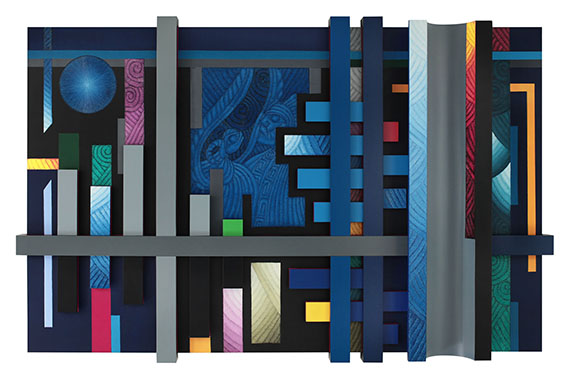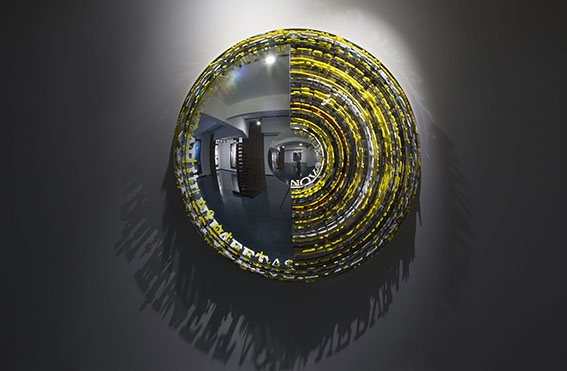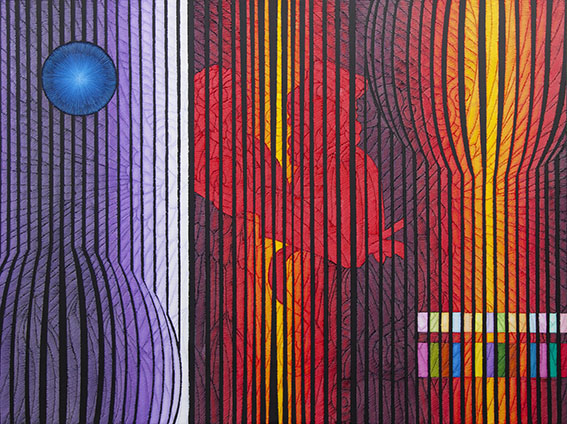Full Art Mode
Exit Full Art Mode by clicking on Page or ESCTouch screen to exit Full Art Mode
skip



review
Ahmet Güneştekin
04.08.2019 - 26.08.2019
Ahmet Güneştekin’s artistic work is closely connected with the history of his country. At a time in which much is being spoken about globalization, and exhibitions are revolving around culture and the future, Ahmet Güneştekin remains in the present especially with his work, and looks back from there. The starting point for his artistic activities are the religions and myths of his Anatolian homeland, which he reflects upon unorthodoxly in his works. In this respect, he is not concerned with developing a storytelling format or narrative structure, but with creating a visual world that does exhibit a form of spirituality, yet remains an abstraction. His picture titles, however, leave no doubt that this concerns a recourse to a time that seems far removed today, a recourse to cultures that arose through great narratives and distinguished themselves through their proliferation. The Epic of Gilgamesh, for instance, was widely received up to the time of the Bible.
Ahmet Güneştekin repeatedly mentions that mythologies are both representations of the present as they are of the past, that myths reflect both a past and the present. (Güneştekin: "Of its nature, the past becomes the present because memory need a here and now.")
The artist has repeatedly explored, in his films especially, how social and psychological processes shape a collective memory. He assumes that mythologies are not merely invented stories, but rather fantastical reflections of real events.
In the culture of the Yazidis, the people from whom Ahmet Güneştekin is greatly inspired, all lore and traditions are handed down by word of mouth, which strengthens them through the personal storytelling styles.
Ahmet Güneştekin’s paintings are potent geometric constructions interwoven with flowing and winding lineatures. Legends, such as Lilith, Pegasus, Achilles, Phoenix and Medusa, appear in the abstractions and dramatizations. Snakes play a role in them, too, as do the number seven and the doors to immortality.
Two elements, however, are central: The sun and the Peacock Angel. The Yazidi culture is fundamentally connected with sun worship and the figure of the Peacock Angel. With the sun being the signum of Güneştekin’s artistic oeuvre.
Stories and myths are superimposed on each other in Güneştekin’s work in an almost postmodern way, in that an array of equal viewpoints placed next to each other are juxtaposed.
Güneştekin’s credo is: Grant an understanding to all cultures and treat them equally, with the sun as a common value for warmth, light and life. Together with the condemnation of ideologies, extremism, fanaticism and dogmas. In his more recent works, this political accentuation is accorded even more space.
"Never There" is an assemblage and indicative of a new creative phase.
The work refers to pogroms and expulsions, yet it is not some eye-catching depiction of horror, but rather a profound philosophical reflection. (Site of memory)
Ahmet Güneştekin’s artistic oeuvre is characterized by a dialectical outlook. And his creative output cannot be appreciated enough as a humanist manifesto.
review
Bernd Kirschner
17/08/2019 - 28/08/2019
review
